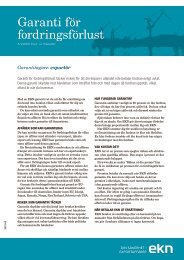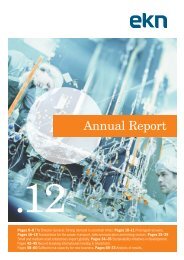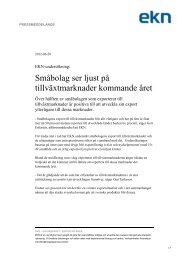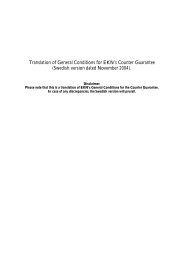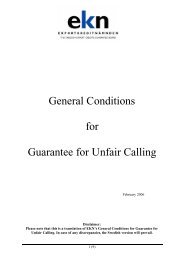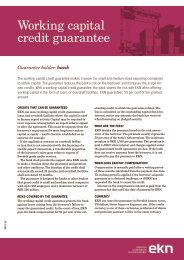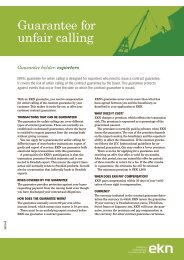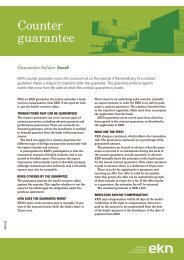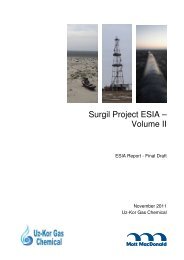Surgil ESIA Report - Volume III - EKN
Surgil ESIA Report - Volume III - EKN
Surgil ESIA Report - Volume III - EKN
Create successful ePaper yourself
Turn your PDF publications into a flip-book with our unique Google optimized e-Paper software.
OAJ “O’ZLITINEFTGAZ”<br />
ПТЭО «Комплексное обустройство<br />
месторождения Сургиль с извлечением ценных<br />
компонентов»<br />
Second geotechnical element (EGE-2) includes limestone, limestone-rakushnyak<br />
heavily fractured, weathered, friable. Layer thickness 1.0 meters or more. Group of soil on<br />
the development of 31b.<br />
Third geotechnical element (EGE-3) interbedded sandstone carbonatized with<br />
mudstones, marls. Marls and mudstones in the form of thin layers of platy. At the top layer<br />
of soil cracks, the cracks plastered.<br />
Groundwater at the study site to a depth of 10.0 m is not revealed.<br />
Soils have a high degree of aggressiveness in relation to the concrete in sulfateresistant<br />
cement, and a high degree of corrosivity for steel. The depth of seasonal freezing -<br />
0,72 m. Seismicity area - 5 points.<br />
Based on the analysis of the soil in the area of an object, we can conclude:<br />
- Construction of the facility is on land not suitable for agriculture due to low fertility<br />
and strong salinization of soils;<br />
- Soil area under consideration, mainly to have structural damage, so the additional<br />
physical effects of significant changes will not make;<br />
- Chemical pollution accumulates, mostly in the upper layer of soil because of high<br />
capacitive properties of the terms of rocks.<br />
Radioactivity of soils ranges from 18 - 20 mR / h. In accordance with sanitary norms<br />
of radiation safety of the Republic of Uzbekistan exposure dose of radiation to areas with<br />
permanent presence of humans should not exceed 30 mR / h. Thus, the natural radioactivity<br />
of soils does not exceed the MPC.<br />
Current status of Aral Sea in a desert zone determines the nature of the vegetation of<br />
the investigated region. In connection with modern natural processes in the operation area is<br />
observed degradation of vegetation cover. One of the most difficult factors determining the<br />
current state of Aral Sea ecological community is a process of desertification.<br />
The predominant type of desertification - soil salinity, but along with it is marked and<br />
the degradation of fragile vegetation. Manifestation of desertification are vast expanses of<br />
marshes, the unevenness in the overgrowth, the predominance of annual species of plants, a<br />
weak association of them, a small part of perennials, the incomplete development of<br />
biogorizontov, increasing the degree of mineralization of groundwater and lowering them.<br />
In the Aral Sea in Uzbekistan, according to published data found 244 species of flora.<br />
Among the most common family of the following: buzgunovye, Asteraceae, cereals,<br />
tamariksovye, sedges, Chenopodiaceae, cruciferous and leguminous plants.<br />
Flora of water (the Aral Sea and Lake) is very poor and about 13 species of higher<br />
plants. They are representatives of families Rogozov and sedge, they were in retreat of the<br />
sea more resilient than other groups of plants.<br />
Changes in environmental conditions led to impoverishment of species composition<br />
(both qualitatively and quantitatively) flora. In the operation area of the most common are<br />
Книга 2. Часть 2. Проект ЗВОС по строительству ГХК<br />
20



